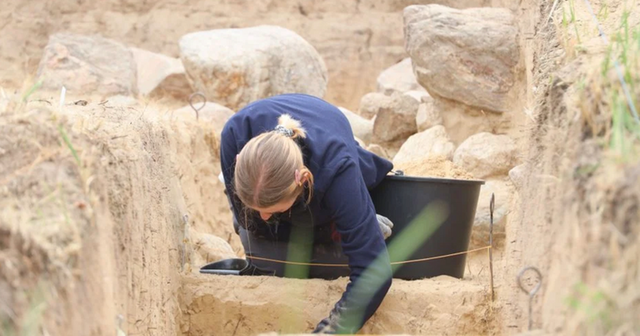
Known as the 'Giants' Tombs', what was recently discovered in Europe?


We are all familiar with the famous Pyramids of Giza in Egypt, but you probably didn't know that mysterious ancient pyramids have also been discovered in Poland. Located in the northwest of the country, these pyramids are known as the Tombs of the Giants or the Kujawski Hills and were first identified in the mid-1930s.
And they are old enough, estimated to have been built in the 4th millennium BC, to house the remains of a single important figure in the community. They were built after the Egyptian ones and were built by agricultural settlers, who formed elongated triangular earthen mounds topped with large stones in the forests of the continent.
These pyramids showcase the work and craftsmanship of the Neolithic peoples of the time, and apparently, they had no problem lifting heavy weights, as they could move large stones weighing 10 tons to erect the monuments, some of which were as tall as a one-story house.
Wielkopolska, an area in west-central Poland, is home to some of the most recent evidence found in 2019, with two more pyramids being discovered in the Dezydery Chłapowski Landscape Park by researchers from Adam Mickiewicz University, after the team used advanced remote sensing technology, which provided an outline of the distinctive trapezoidal shape.
Archaeologists were able to tentatively estimate that the structure is about 5,500 years old and thus may have a connection to the Funnelbeaker culture, a semi-rural society that emerged in north-central Europe. Of course, the structure is not exactly what it once was, given the time that has passed, as the locals would have used the stone for other building projects elsewhere; most notably, a large stone for the pyramid's entrance is missing.
However, there are still stones that mimic the shape of Neolithic houses and follow the convention of running a line from west to east, potentially suggesting sun worship. A full excavation of the pyramids will be required to fully know what they contain. But what we do know is that a person would be buried (face up and feet pointing east, towards the entrance) inside the pyramids along with valuables.
“In the case of this megalith, the skeleton probably did not survive, but the grave goods may have survived,” Artur Golis, a specialist at the national park, told the Polish Press Agency. “Potentially, these could include stone axes, hatchets, ceramics or characteristic clay vessels.” According to the researchers, they believe that society at the time, while egalitarian, built a pyramid for an important person, such as a leader, priest or shaman, in their community.
After the confirmation of two pyramids, it seems there are even more, as there are now three possible locations in the Dezydery Chłapowski Landscape Park.

The Ukraine summit that ignored the tough questions
ideas
top
Alfa recipes
TRENDING 
services
- POLICE129
- STREET POLICE126
- AMBULANCE112
- FIREFIGHTER128































